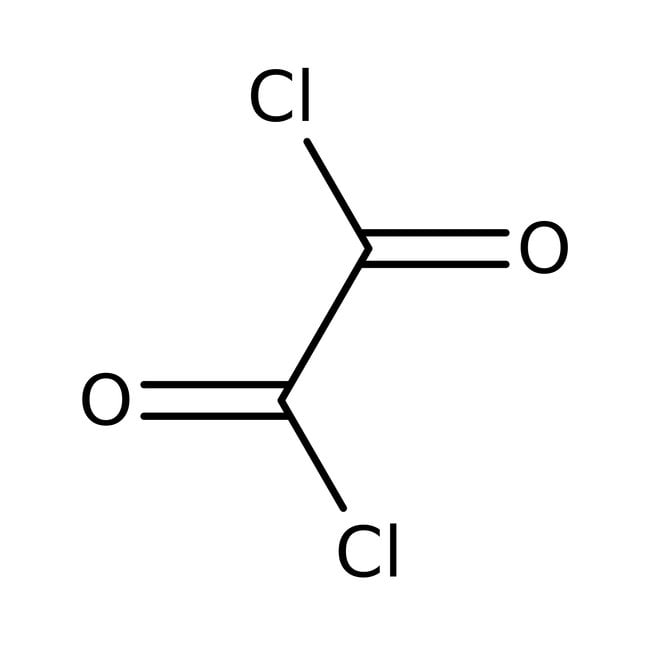Search Thermo Fisher Scientific
Oxalyl chloride, 2M soln. in dichloromethane, Thermo Scientific Chemicals



Oxalyl chloride, 2M soln. in dichloromethane, Thermo Scientific Chemicals
Chemical Identifiers
Specifications
Description
This Thermo Scientific Chemicals brand product was originally part of the Alfa Aesar product portfolio. Some documentation and label information may refer to the legacy brand. The original Alfa Aesar product / item code or SKU reference has not changed as a part of the brand transition to Thermo Scientific Chemicals.
Reagent used in organic synthesis. Unncatalyzed reaction of silyl ketene acetals with oxalyl chloride yeilds symmetrical pulvinic acids. Catalytic syntheses of N-heterocyclic ynones and ynediones by in situ activation of carboxylic acids with oxalyl chloride. Oxalyl chloride was reportedly used in the first synthesis of dioxane tetraketone.
Solubility
Reacts with water.
Notes
Moisture Sensitive. Store in cool place. Keep container tightly closed in a dry and well-ventilated place. Store away from strong oxidizing agents, water, moisture, light, bases, alkali metals, alcohols, dimethyl formamide.
Figures
Documents & Downloads
Certificates
Frequently asked questions (FAQs)
Citations & References
Safety and Handling
Classification of the substance or mixture
CLP classification - Regulation(EC) No 1272/2008
Label Elements
Signal Word
Danger
Hazard Statements
H302 + H332 - Harmful if swallowed or if inhaled
H314 - Causes severe skin burns and eye damage
H336 - May cause drowsiness or dizziness
H351 - Suspected of causing cancer
Physical hazards
H260 - In contact with water releases flammable gases which may ignite spontaneously
EU Specific Hazard Statements
EUH014 - Reacts violently with water
EUH029 - Contact with water liberates toxic gas
EUH071 - Corrosive to the respiratory tract
Precautionary Statements
P231 + P232 - Handle and store contents under inert gas. Protect from moisture
P280 - Wear protective gloves/protective clothing/eye protection/face protection
P301 + P330 + P331 - IF SWALLOWED: Rinse mouth. Do NOT induce vomiting
P303 + P361 + P353 - IF ON SKIN (or hair): Take off immediately all contaminated clothing. Rinse skin with water or shower
P304 + P340 - IF INHALED: Remove person to fresh air and keep comfortable for breathing
P305 + P351 + P338 - IF IN EYES: Rinse cautiously with water for several minutes. Remove contact lenses, if present and easy to do. Continue rinsing
P310 - Immediately call a POISON CENTER or doctor/physician